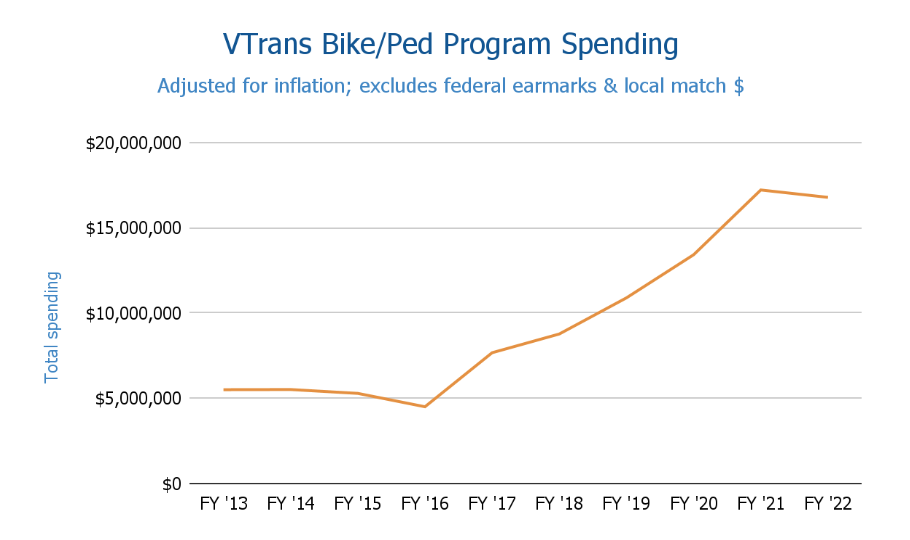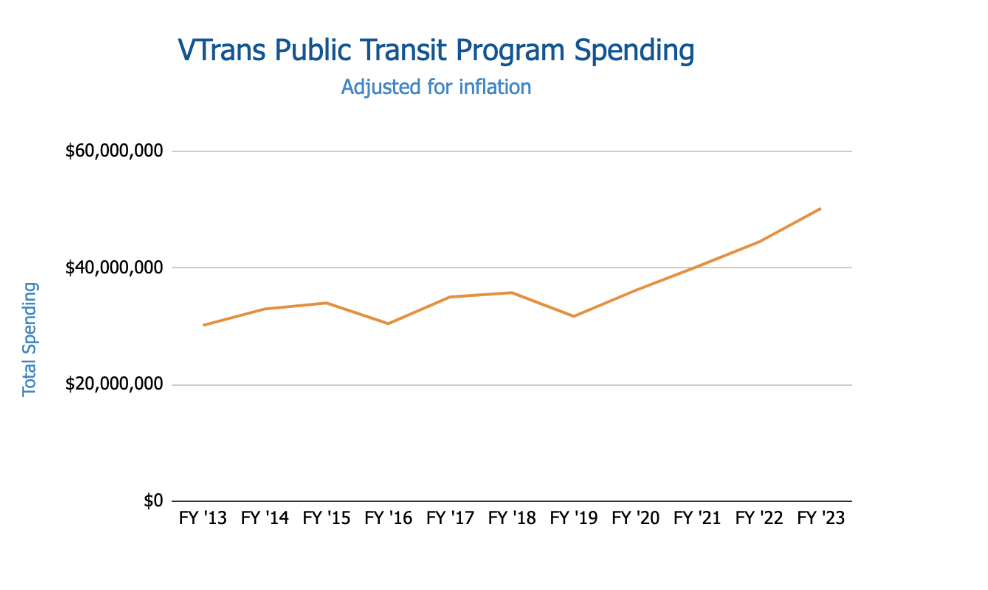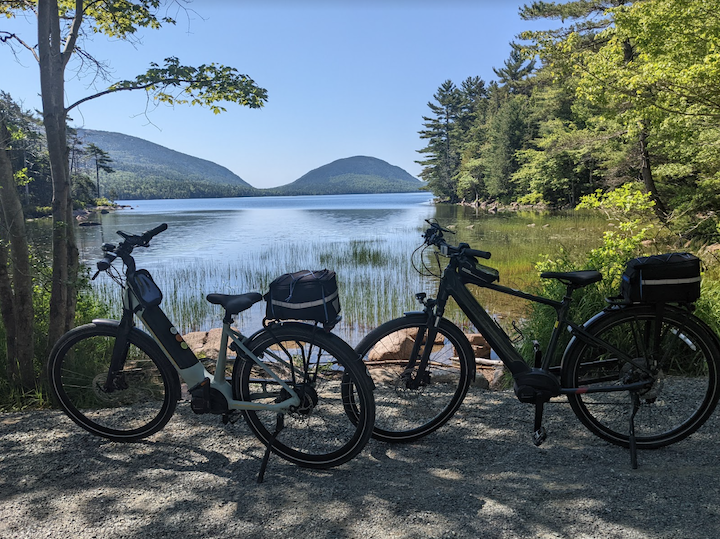By Kati Gallagher, Sustainable Communities Program Director, Vermont Natural Resources Council
As readers of this blog know, active and shared modes of mobility (walking, biking, rolling, riding, carsharing, etc.) are critical to a sustainable transportation system — and healthy, connected and resilient communities. From increasing independence for folks without vehicles, to reducing greenhouse gas emissions and other pollutants, improving safety and access to our streets for all users is a win for our neighbors and our environment. While the 2022 Vermont legislative session saw significant investments in sustainable transportation, active and shared transportation modes were often overlooked – or worse, held in hostility.
This past year was my first as the coordinator for Transportation for Vermonters (T4VT), a diverse coalition advocating for sustainable transportation solutions, and I learned that transportation policy in Vermont is developed a bit differently than other state issues. Our legislative process for allocating funding for transportation programs and establishing new priorities and policies is generally funneled through the Transportation Bill (or, “T-Bill”), which is crafted by the House and Senate Transportation Committees and primarily informed by the Agency of Transportation (VTrans) – with limited opportunity for outside input.
While state legislators and VTrans have made significant strides in recent years to support communities looking to improve walk- and bike-ability, invest in public transit, and explore new mobility solutions, the reality is that our streets are still primarily designed to prioritize single-occupancy vehicles. The result is that most Vermont streets are unsafe or inaccessible for folks who need or prefer other forms of transportation.
The 2022 Transportation Bill did make progress on several key issues however, including:
- Electric Bicycle Incentives
- $55,000 was granted to provide rebates for e-bike purchases, continuing the nation’s first statewide e-bike incentive program that was established last year. E-bikes are a particularly important solution for people with mobility challenges.
- Bicycle & Pedestrian Planning Integration
- A new program was established within VTrans to support the continued development and buildout of bicycle and pedestrian infrastructure. VTrans will work with the Regional Planning Commissions (RPCs) to implement the program through funding for prioritized municipal bike/ped plans.
- Zero-Fare Public Transit
- $1,200,000 will extend zero-fare public transit for most routes (excluding commuter and LINK Express routes) through FY23 to help support transit riders and ridership.
- Vermont Road Design Standards Update
- The Vermont State Standards (VSS) – the design standards that shape how our streets work (or don’t) – were ahead of their time when first implemented in 1997, but haven’t been updated since then. VTrans must come up with a plan for updating the VSS “…to create context-sensitive, multimodal projects that support smart growth…”
What does this funding mean in context?
The 2021 Smart Growth Progress Report, published by VNRC and AARP-Vermont, examined whether state transportation spending between 2013-2019 reinforced or undermined Vermont’s smart growth policies, which include providing transportation choice and supporting compact development in downtowns and village centers. Incorporating more recent data, we find that Vermont continues to spend the vast majority of transportation funds on roads and bridges. Road and bridge projects may include aspects that support active transportation (such as pedestrian signals or paved shoulders), though in 2015 VTrans estimated that only approximately 11.7% of the money spent on highway and bridge construction projects supported walking and biking. The newly created Bike & Pedestrian Planning Integration Program can help to institutionalize bike/ped infrastructure throughout these ‘traditional’ transportation projects.

While the majority of bike/ped investments are made on local roads, state funding is often required to do so. The Bicycle & Pedestrian Program funding has seen significant increases since 2013, which should be applauded. Still, the Bike & Ped Program plus the VTrans Transportation Alternatives Program accounted for only 2% of the total transportation budget in 2019.
Vermont’s public transit budget includes capital and operating funds for urban and rural routes, door-to-door services to help older Vermonters and those with disabilities meet essential needs, and the GoVermont! Program to connect people with ride options. VTrans’s public transit program has also seen increased investments in recent years, with recent bumps in part thanks to federal Coronavirus-related funding. Non-transit funds also contribute approximately 60% of the public transit budget in a normal year.

Looking ahead, the update to the Vermont State Standards passed this legislative session will be implemented in conjunction with, and following, other studies that support multi-modal, sustainable transportation investments. For instance, VTrans and partners recently kicked off a research project that will “investigate how compact, mixed-use development patterns affect vehicle miles traveled (VMT), mode share, and greenhouse gas (GHG) emissions compared to more dispersed development patterns,” which will provide timely data to inform policy and budgetary decisions.
I look forward to working with our Transportation for Vermonters, agency, and legislative partners to further the shared goal of a sustainable transportation system in the upcoming legislative session. There’s a lot to do!
For 2022 Legislative Walk-Through, Part 1: Electrifying Transportation, see here.
- As noted in the Smart Growth Progress Report, “the bump in spending after 2016 may reflect the end of a backlog: after a seven-year hiatus of funding for the bike ped program, it’s likely that projects awarded funding in 2012 and 2013 went to construction in 2017 and after. This makes it clear that continued funding is essential not only for steady improvement of the transportation system, but also to ensure continuity for project planning and development.”
- Bike/Ped Program spending adjusted to 2020
- Public Transit Program spending adjusted to 2021




